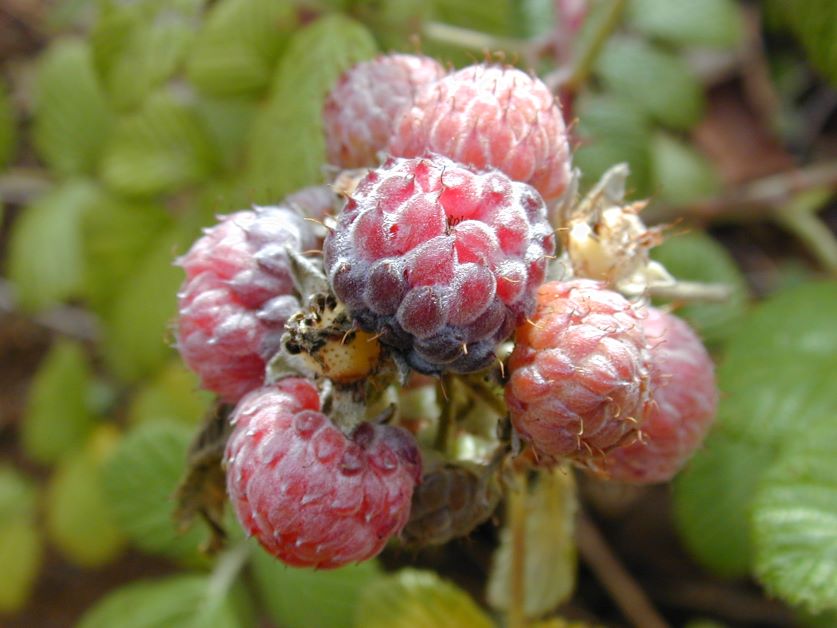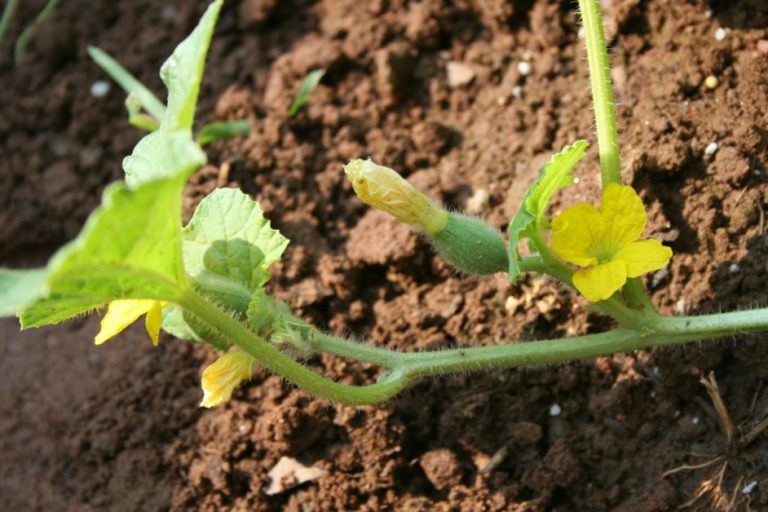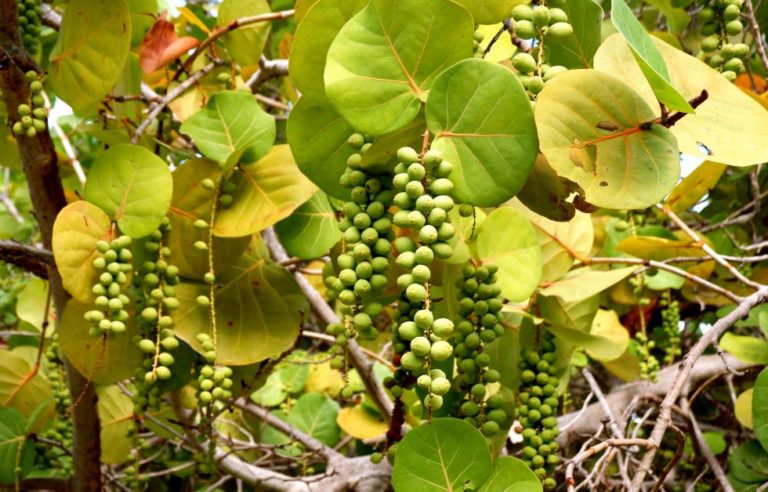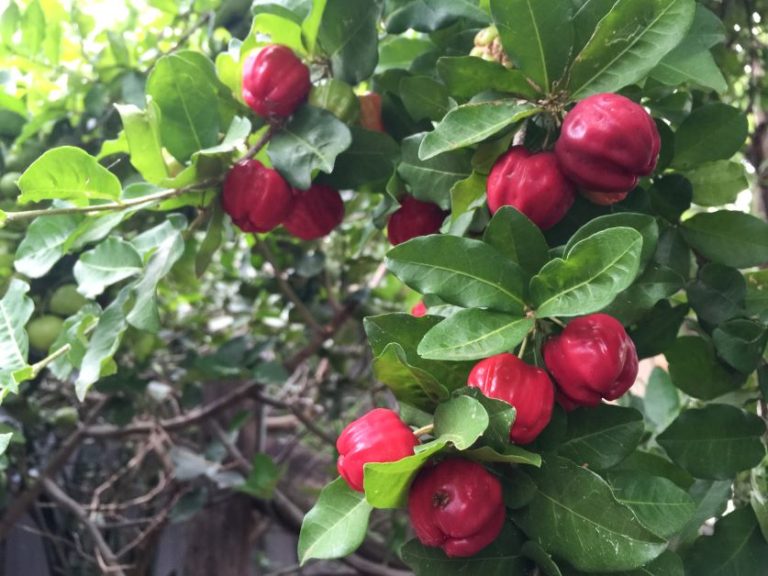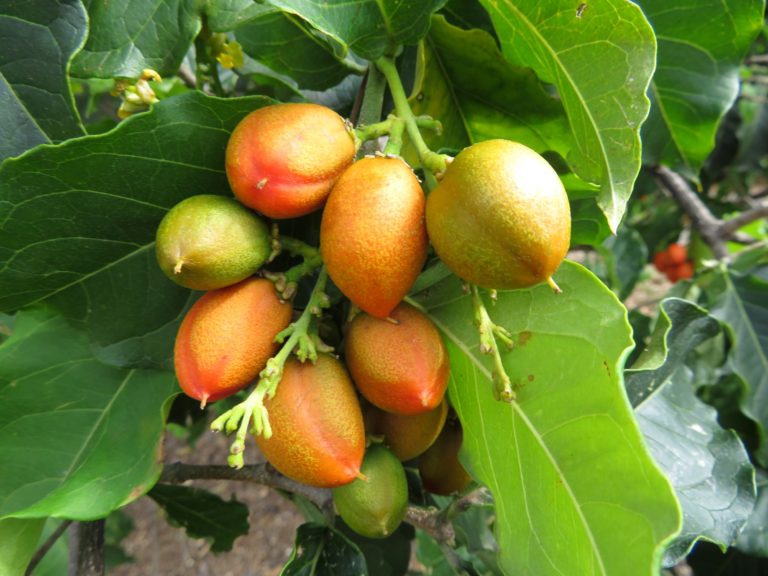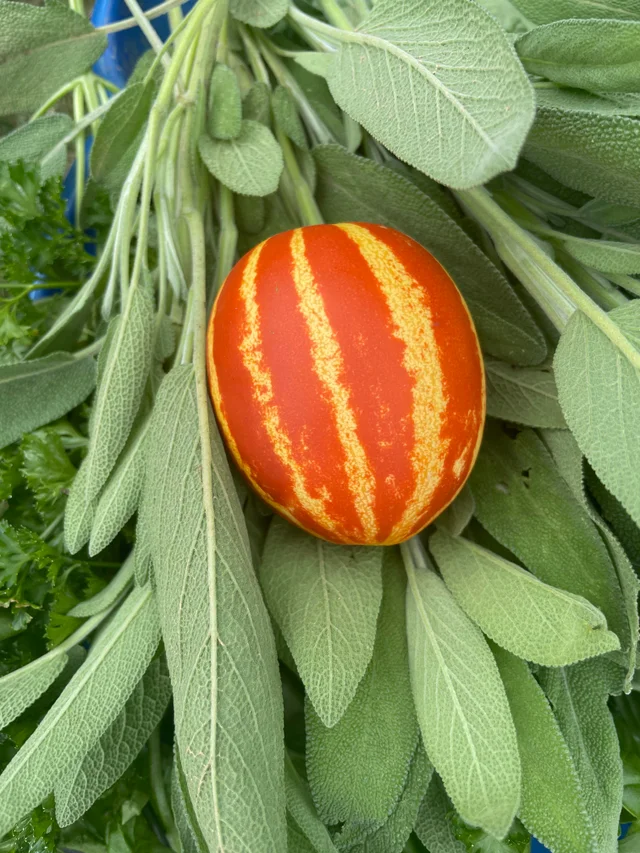How to Grow Raspberries in Florida
Wanna grow raspberries in Florida? Well, you can’t. Not the traditional kind, anyways. Red raspberries need cooler temperatures to set fruit. If they’re lucky (and persistent) gardeners in North Florida might be able to grow raspberries, but the general rule is that the raspberry growing zone stops at 6 or 7.
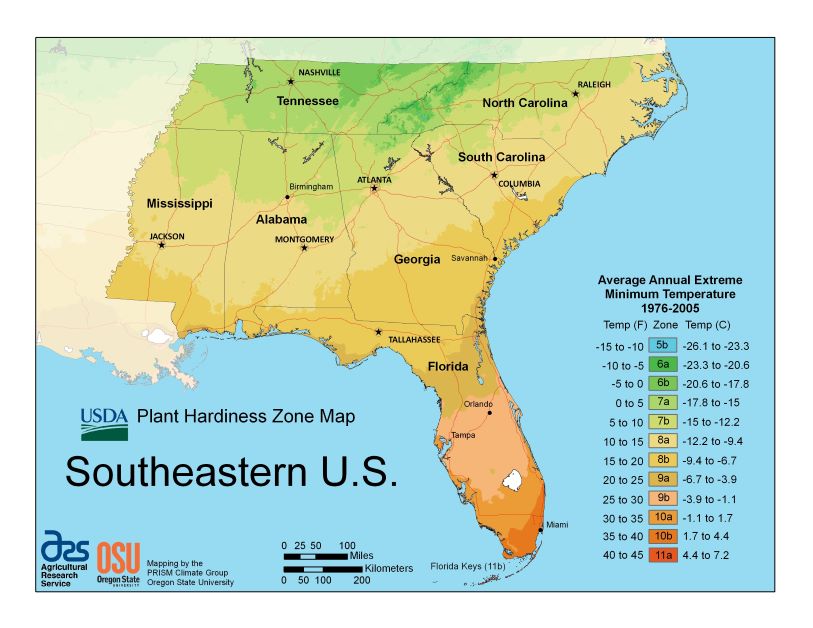
Although you can’t grow” regular” raspberries, there’s one type that goes gangbusters in Florida: the mysore raspberry. This species thrives in heat and humidity. Whether you’re an old green thumb or starting your first garden, the mysore is an easy-growing, heavy producer.
What is a Mysore Raspberry?
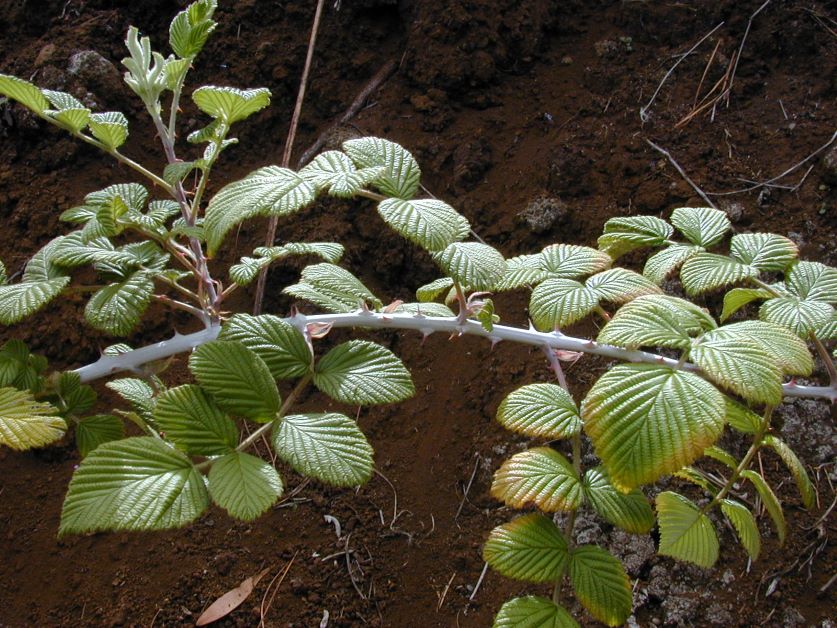
Also known as Ceylon raspberry and hill raspberry, the mysore (Rubus nieves) is not a Florida native fruit. Instead, it’s a tropical raspberry native to South East Asia, China, and parts of the Middle East.
Mysores grow in the same way as traditional raspberries – on brambles. Brambles are prickly, thorny shrubs (roses are a bramble). Raspberry brambles send out stems called canes, which is what the raspberry fruit grows on. While a raspberry bramble can live up to 20 years, canes live for two. This makes pruning an important part of maintaining a raspberry plant.
There are a few differences between mysore fruit and red raspberry fruit. As mysore raspberries mature, they turn from pinkish white to red to a dark purple, almost black. Fully ripe mysore raspberries look a little like they’ve been dusted with white powder. This is called a “bloom” and is completely normal. As far as flavor is concerned, these two fruits taste a lot alike though some say that mysores are a little milder (but still sweet).
How to Grow Mysore Raspberries
The germination rate for mysore raspberry seeds is low and unpredictable, so most people start their brambles by buying a live plant.
Mysore Raspberry Care
Temperature
With a growing zone from 9A to 10B, Mysore raspberries are frost-tender. They can handle the occasional drop to 35F, but 20F will kill a young plant. Gardeners in North and Central Florida will need to cover their mysore brambles with a frost blanket on chilly winter nights.
Light
You can grow mysore raspberries in full sun, but you’ll have a bigger harvest in dappled shade.
Water
Mysores need a moderate amount of water, especially when the plant is young. Our near-daily rain in Florida summer should be enough to keep your mysore going but you’ll need to soak your plant twice a week during the dry season. If you find that your berries are falling off before they’re fully ripe, chances are that your plant isn’t getting enough water.
Soil
As long as it’s well-draining and slightly acidic, mysore raspberries aren’t picky about their soil.
Spacing
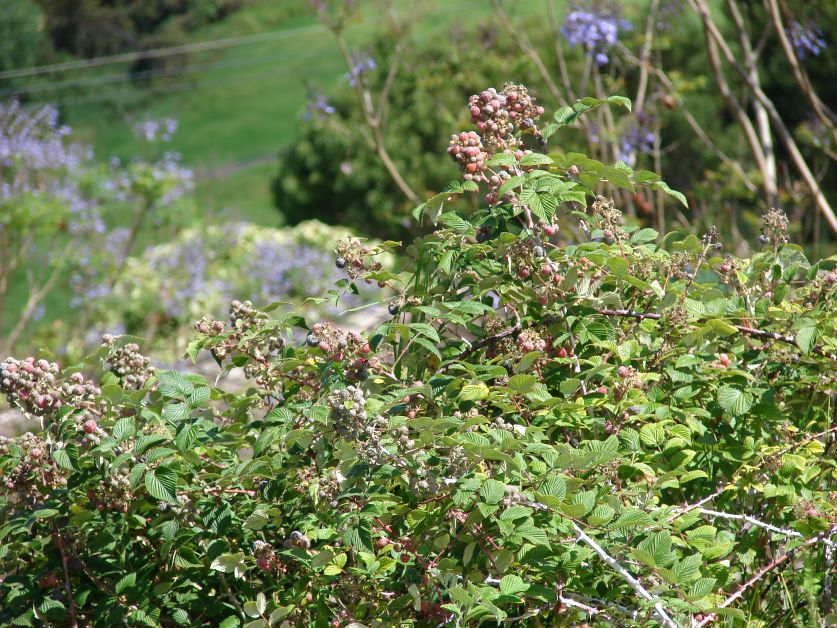
Raspberry brambles need a lot of room. If you are growing more than one mysore raspberry plant, give them 2 ½ to 4 feet of space and plant in rows 6 feet apart.
Mysore raspberry is semi-upright. You’ll want to give it some support to keep your fruits off the ground. You can use long bamboo poles and wire to stake your bramble. You can also grow your mysore along a fence or trellis and attach the canes to the structure as it spreads and grows taller.
Fertilizer
Amend your soil with oak leaf compost before planting your mysore raspberry, but don’t use actual fertilizer. Fertilizing your raspberry too early will burn the roots.
Once your plant is established, feed it organic 10-10-10 fertilizer three times per year, with the first feeding in March and the last feeding in August. Follow the instructions on the bag to figure out how much to feed per plant.
How to Prune Mysore Raspberries
Mysore raspberries get unruly and will choke out other plants if they aren’t cut back after the fruiting season. Annual pruning will also help your bramble produce more flowers in the following year.
At the start of summer:
- Cut back dead canes down to the soil line.
- Sometimes, new canes will grow off of old canes. If you see a dead cane with a new cane shoot, then cut the dead cane an inch above where the new growth starts instead of cutting it all the way down to the ground.
At the end of summer:
- Cut new canes down to 4-6 feet tall. This will help keep the fruit within arm’s reach.
In fall:
- Trim lateral branches so that they’re 10 inches long. Lateral branches are those that grow off the sides of the new canes.
In winter and spring:
- This is the mysore raspberry flowering season. Don’t prune your plant (unless you’re removing dead canes with no new growth). Otherwise, you’ll prune off potential fruit and decrease your yield.
Harvesting
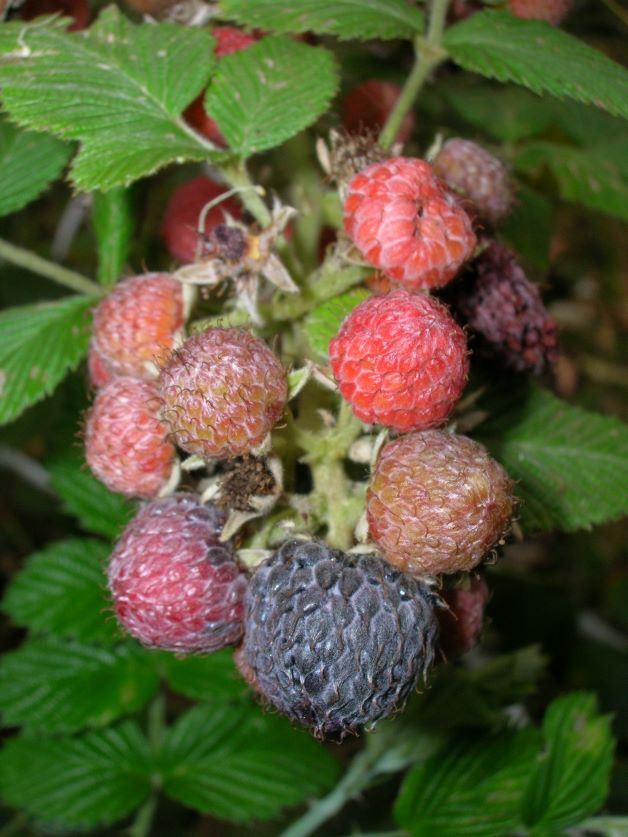
One of the best things about mysore raspberries is how quickly they produce fruit. Traditional raspberries take three or more years to really get going. The mysore, on the other hand, will give you a decent harvest after the first year.
Mysore raspberry fruiting season is from February through June. Usually, the bottommost fruit will be the first to ripen and the berries ripen one by one rather than bunches at a time. Mysore raspberries are ready to pick when they’re a dark purple color and when they pull off the cane with the lightest of tugs.
One drawback to this variety is their thorns – there are tons of them and they’re long. To make matters worse, the backs of the leaves also have little barbs. If you’re harvesting berries that are hidden deep inside the bramble, you might want to wear rose pruning gloves. Rose pruning gloves are thin enough so you delicately pluck the fragile berries but will also protect you from the mysore’s crazy thorns.
Can You Grow Mysore Raspberries in a Container?
Yes! As long as the container is big enough, you can plant mysore raspberry in a container. A 10-gallon pot (or bigger) filled with well-draining potting soil is best.
If you grow mysore raspberry in a container, you’ll have to prune your plant shorter than one that’s grown in the ground. It’s also important to only water a container-grown raspberry when needed — it’s easier to overwater a plant in a container than it is to overwater a plant in the ground.
Is Mysore Raspberry Invasive?
Yes, mysore raspberries can be invasive. In fact, Hawaii placed it on its invasive species list because of the mysore’s ability to choke out native plants. This species easily seeds itself from your yard to somewhere else miles away via birds. Birds love this fruit – they eat the berries, take off in flight, poop out the seeds, and boom, you’ll get a mysore raspberry bramble.
The best way to cut back on the invasiveness of the mysore raspberry is to practice proper pruning. If your plant is especially dense and sprawling after it’s been growing a few years, you may want to rip it up completely and start a fresh bramble.
Mysore Raspberry Troubleshooting
Mysore raspberries are easy to grow in warm-weather climates but if you do have any issues, it’ll most likely be one of the following pests or diseases.
Pests
Squash Bugs
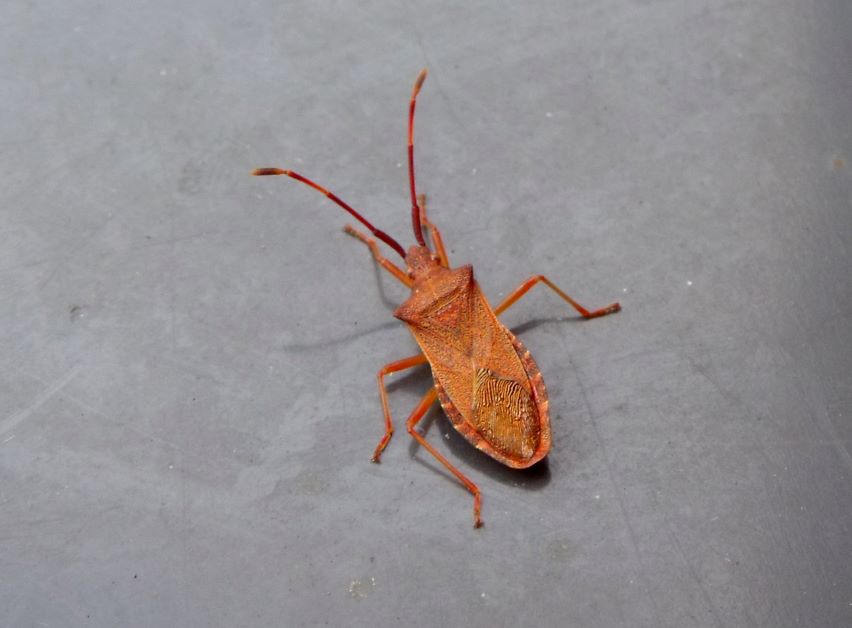
The best way to kill squash bugs is to remove them by hand. Check for squash bug eggs under leaves and scrape off any that you find. Because mysore raspberries are so thorny, you should use thick rubber gloves instead of the thin, disposable type.
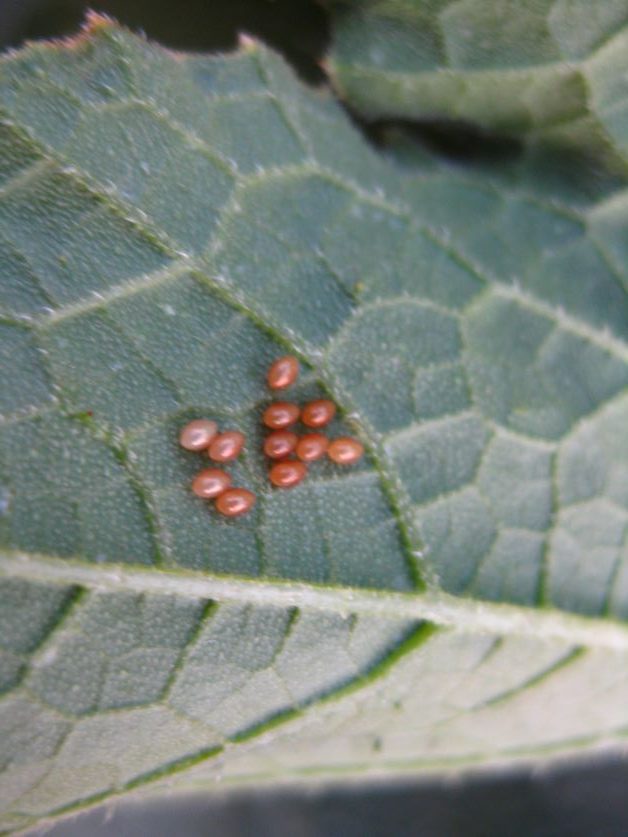
Birds and Mammals
It’s inevitable – you’re going to lose some berries to birds and mammals. Pick your berries as soon as their ripe and you can use bird netting to protect your raspberry plant as needed.
Diseases
Anthracnose
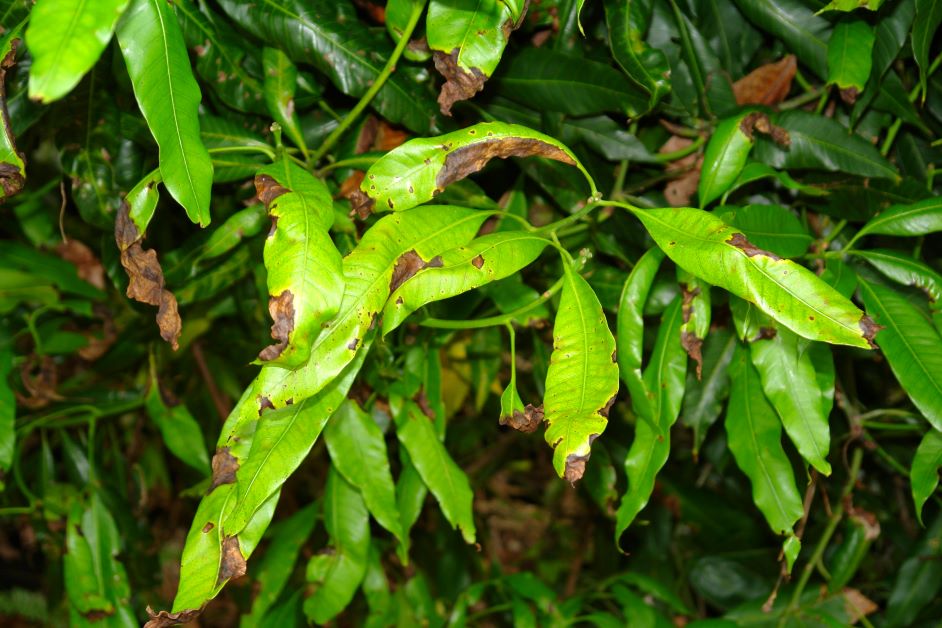
Most tropical plants deal with a disease called anthracnose. To cut down on your chances of contracting this fungal disease, always water your plants at the base and not on the leaves. Using a water wand or installing drip irrigation will help. You should also water in the morning. If you water at night, your plant won’t have time to dry out in the sun. Finally, proper pruning will increase airflow between the leaves, cutting down on the general sogginess of your plant.
Featured image credit: Forest and Kim Starr

